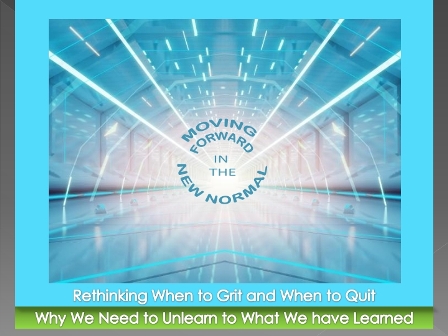
The world was starting to accept the premise that AI and Robotics was shifting our future living, learning and lifestyle – when the pandemic hit and accelerated the adoption of digitization, e-commerce and automation! Enter 2021 and now tech nouns are becoming verbs – like “Zoomed, Teamed, Slacked, Remoed, Discorded“, and with remote of everything becoming the norm rather than in-person meetings of past.
After a year of experimenting with virtual platforms, from remote learning to remote working, and to even remote lifestyling (yes “guilty” here of using a noun as a verb), workers, businesses and learning organizations are shifting their thinking during this COVID lesson – from recruiting and onboarding, to skills and training, and to best practice regimens of pre COVID paradigms.
According to McKinsey[1], of eight countries surveyed (US, Japan, Germany, France, Spain, UK, China and India), “107 million workers will need to move to new occupations to stay employed”. This is a transformative transition – with the greatest impact on lower-wage workers, women, youth and ethnic minority groups!
 This transition will require all of us to “unlearn what we have learned“ (as Yoda said to young Luke Skywalker on StarWars), before we can move forward! Interesting isn’t it, on how movie memes seem to always make their way into our lives? Is there something that Hollywood knows – that they can share with the rest of the world?
This transition will require all of us to “unlearn what we have learned“ (as Yoda said to young Luke Skywalker on StarWars), before we can move forward! Interesting isn’t it, on how movie memes seem to always make their way into our lives? Is there something that Hollywood knows – that they can share with the rest of the world?
So how do the 107 million workers and their families move forward?
Adam Grant[2] has a few things to suggest in his new book “THINK AGAIN”. To bring us along with his thinking he quotes two known iconic influencers you might know:
- “People who are right a lot listen a lot, and they change their mind a lot, Jeff Bezos says, “if you don’t change your mind frequently, you’re going to be wrong a lot”. From first selling books out his garage to building Amazon, and Blue Origin, he can probably bend our ears on what worked and what still needs to shift post COVID.
- “Taking responsibility is taking your power back” says Will Smith. We’re not sure if he got a glimpse of the future in his action sci-fi role for “Men in Black” where yes they did bring earth back using unconventional methods! Yes, you can say it was a type of Shadow Learning of another worldly kind for Will Smith!
So how do we move forward?
In a recent 2021 Politics and Prose with Adam Grant & Angela Duckworth video, we see Adam Grant, author of “THINK AGAIN” interviewed by Angela Duckworth[3], author of “GRIT” The Power of Passion and Perserverance – on whether to use GRIT or to THINK AGAIN on navigating through learning, careers, and life in general. So which approach fits the times – to help the 107 million to move forward? Well, it depends on the people, situations, and circumstances. And of course there’s always the possibility to use a hybrid approach. Read on…
In the recent genre of businesses and of professions, the paradigms of pre COVID times focused largely on performance, results and best practices – leaning to Angela’s “Grit” side of the approach. On the other hand, the hold and rethink is another a way to reconsider your options or pivot (a startup biz verb) as a way to move forward post COVID. Adam says “We can operate more like scientists, defining ourselves as people committed to the pursuit of truth – even if it means proving our own views are wrong“. So pivoting does not necessarily mean failure. Changing pathways is not failing your “GRIT” – to persevere or to follow your passions, or to overcome obstacles in this New Normal World!
 So what are the obstacles to moving forward?
So what are the obstacles to moving forward?
According to author Matt Beane[4] “Learning to Work with Intelligent Machines”, job learning (OJL) plays a key role – however OJL has been disrupted by “AI and Robotics in changing the roles and tasks of jobs”. He notes that pre-COVID, “only one in five workers had learned any new job skills through formal training in the previous years” (Accenture 2011). The deployment of “analytics, AI and Robotics into many aspects of work” in the New Normal World has created a chasm in the growing skills gap, and has disrupted the traditional OJL approach to train, reskill, upskill and transform the 107 million workers.
So what can we do to move forward in this New Normal of Digitization and Automation?
Matt answers this with Shadow Learning. Shadow Learning is a way to overcome the disruption of the OJL approach. It’s a new term for what we once referred to as apprenticeships, trainees, residents, interns, fellows, and many other terms, depending on the occupation and industry sector.
However, there are still obstacles to Shadow Learning in the digital and automated New Normal economy of AI and Robotics. According to Matt:
- “Trainees are being moved away from their learning edge”. He says that “as organizations introduce intelligent machines”….”trainees are being kept from the situations in which they struggle near the boundaries of their capabilities and recover from mistakes with limited help – a requirement for learning new skills”
- “Experts are being distanced from the work” where “sometimes intelligent machines get between the trainees and the job” and “other times they’re deployed in a way that prevents experts from doing important hands on work”
- “Learners are expected to master both old and new methods” where “the only people who handled both old and new methods well were those who were already technically sophisticated and had significant organization resources”.
- “Standard learning methods are presumed to be effective” where “by relying on the traditional OJL approach they inadvertently sabotaged learning”
Ok, so how have Shadow Learners approached and managed the obstacles and the disruptions to their career advancement?
Well, as a result of the obstacles discussed above, Shadow Learners have resorted to “bending the rules” – covertly out of the way, to get the experience they need – which may be in the short term effective, but as Matt says, can take a toll on an organizational. So, are Shadow Learners both rewarded and punished for taking this approach? Matt says apparently people take these risks because “their learning methods work well where approved (the rules) means fail”.
Want to know more? Stay tuned for Episode 2!
[1] The Future of Work after COVID 19, McKinsey, Feb 2021
[2] RETHINK, by author Adam Grant, Feb 2021
[3] GRIT, the Power of Passion and Perseverance, by author Angela Duckworth, May 2016
[4] Harvard Business Review: The Year in TECH 2021, ” Learning to Work with Intelligent Machines” by author Matt Beane




